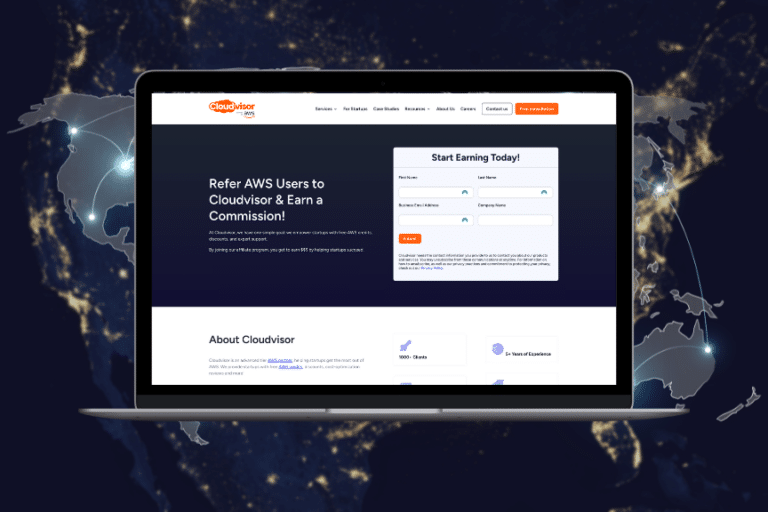Amazon Elastic Kubernetes Service (Amazon EKS) is a fully managed service that makes it easier for you to use Kubernetes on AWS without needing to install and operate your own Kubernetes control plane or nodes. It provides a scalable and secure environment for deploying, managing, and scaling containerized applications using Kubernetes.
Understanding Kubernetes and Amazon EKS
Kubernetes is an open-source platform designed to automate deploying, scaling, and operating application containers. With Amazon EKS, AWS takes care of the heavy lifting of managing Kubernetes, allowing you to focus on developing your applications.
Key Features of Amazon EKS
- Secure Networking and Authentication: Amazon EKS ensures secure networking for your Kubernetes workloads, integrating seamlessly with AWS networking and security services. It also leverages AWS Identity and Access Management (IAM) for robust authentication.
- Easy Cluster Scaling: EKS allows for easy scaling of your Kubernetes clusters, adapting to the demands of your workloads. It supports horizontal Pod autoscaling based on CPU or custom metrics and cluster autoscaling.
- Managed Kubernetes Experience: Amazon EKS offers a managed Kubernetes experience, allowing changes to Kubernetes clusters through various tools like eksctl, AWS Management Console, AWS CLI, and more.
- High Availability: EKS provides high availability for your control plane across multiple Availability Zones, ensuring your applications are always running.
- Integration with AWS Services: EKS integrates with a wide range of AWS services, offering a comprehensive platform for deploying and managing containerized applications.
How Amazon EKS Works
Amazon EKS runs Kubernetes control plane instances across multiple Availability Zones to ensure high availability. It automatically detects and replaces unhealthy control plane instances and provides automated version upgrades and patching for them.
Use Cases for Amazon EKS
Deploy Across Hybrid Environments
Manage Kubernetes clusters and applications in hybrid environments, running Kubernetes in your data centers or in the cloud.
Model Machine Learning Workflows
Run distributed training jobs on Amazon EC2 instances and deploy training and inferences using Kubeflow.
Build and Run Web Applications
Create applications that scale automatically and run in a highly available configuration across multiple Availability Zones.
Getting Started with Amazon EKS
Starting with Amazon EKS involves several key steps:
- You need to create a cluster, which serves as the foundation for deploying your applications.
- Choose your compute resources, which can be Amazon EC2 instances or AWS Fargate, depending on your workload requirements.
- Setting up the necessary controllers and services, ensuring that your Kubernetes environment is configured correctly.
- After the setup, you can deploy your workloads and manage them using the various tools and interfaces provided by AWS.
AWS provides detailed documentation to guide you through this process, making it easier for you to get started with EKS and leverage its powerful features.
Pricing for Amazon EKS
Understanding the pricing for Amazon EKS is crucial for managing your costs effectively. EKS pricing is based on the resources you use. The control plane may incur costs, and you can choose between EC2 or Fargate for your compute resources. AWS offers On-Demand Instances and Savings Plans to help optimize costs based on your usage patterns. By selecting the appropriate pricing models and monitoring your resource usage, you can ensure that you are getting the most value from your investment in Amazon EKS. This cost flexibility allows businesses of all sizes to utilize EKS in a cost-effective manner.
Security Best Practices for Amazon EKS
Security is paramount when managing containerized applications, and Amazon EKS provides several features to help you secure your environment. Implementing best practices, such as using IAM roles for service accounts, can enhance the security of your Kubernetes workloads. Enabling audit logs helps track and monitor activities within your EKS clusters, providing visibility into potential security incidents. Additionally, implementing network policies ensures that your applications are isolated and protected from unauthorized access. These security measures, combined with the robust features of Amazon EKS, help you maintain a secure and compliant Kubernetes environment.
Conclusion
Amazon EKS simplifies the process of deploying, managing, and scaling applications on Kubernetes, making it an ideal choice for businesses looking to leverage the power of containerized applications. For a deeper dive into the capabilities and benefits of Amazon EKS, explore Cloudvisor’s guide on Amazon EKS.






